Are you interested in exploring historic homes? Here are the must-see historic houses in Catalonia:
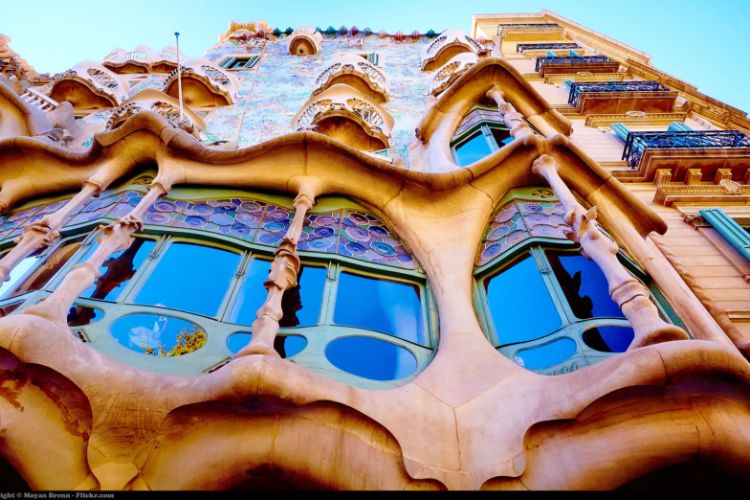
Casa Batlló
BarcelonaCasa Batlló is a building in the city centre of Barcelona that was designed by Antoni Gaudí, which is considered one of his masterpieces. Casa Batlló has been open to the public since 2002. You can visit the former residence of the Batlló family (Noble Floor), the former storerooms and laundry rooms
Nau Gaudí
MataróBuilt between 1878 and 1883 by Antonio Gaudí. Highlight is the structure of the whitening room with parabolic arches.
Gaudí Center
ReusThe Gaudí Centre, located in Reus, Catalonia, Spain, is a museum dedicated to the life and works of the renowned Spanish architect Antoni Gaudí I Cornet. This museum offers a comprehensive insight into Gaudí's artistic journey, showcasing his unique architectural style and innovative design techniques.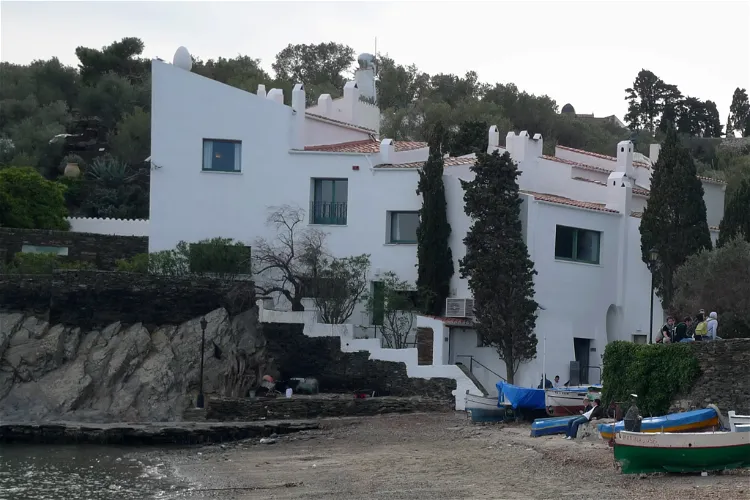
Salvador Dalí House Museum
CadaquésThe Salvador Dalí House Museum, located in Portlligat near Cadaqués, is a significant site as it was once the only stable residence of the renowned painter Salvador Dalí. Today, it serves as a museum, offering visitors a unique insight into the life and work of the artist.- Online discount!

La Pedrera
BarcelonaCasa Milà, popularly known as ‘La Pedrera’ (the stone quarry), an ironic allusion to the resemblance of its façade to an open quarry, was constructed between 1906 and 1912 by Antoni Gaudí (1852-1926). For its uniqueness, artistic and heritage value have received major recognition and in 1984 was ins 
Municipal Museum of Tossa de Mar
Tossa de MarThe Municipal Museum of Tossa de Mar is a significant cultural asset of national interest located in the town of Tossa de Mar in Catalonia. The museum's primary purpose is to display the works of artists who have stayed in Tossa de Mar, making it a rich repository of artistic heritage.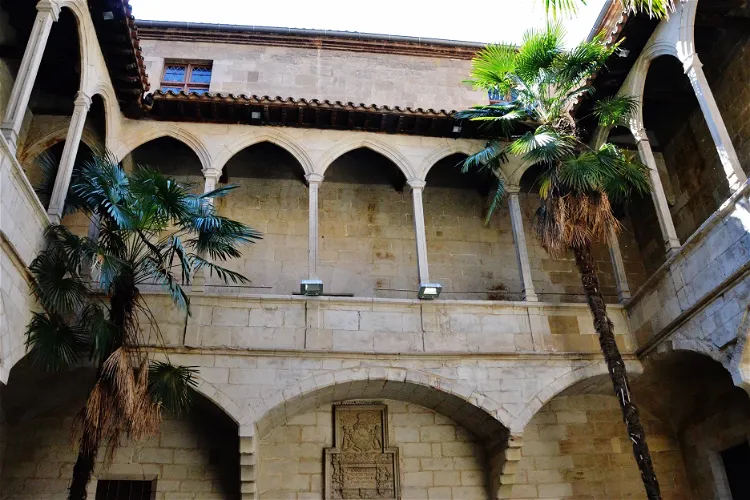
Old hospital of Santa Maria
LleidaThe Old Hospital of Santa Maria is a significant historical site in the Spanish city of Lleida. It is a prime example of Catalan Gothic civil architecture from the 15th and 16th centuries. The building's structure is simple, with a square layout and a square courtyard in the center. The ground floor has thick walls to support the weight of the roof beams and thinner walls on the upper floors. The building was declared an Architectural Artistic Monument by royal order on March 15, 1920.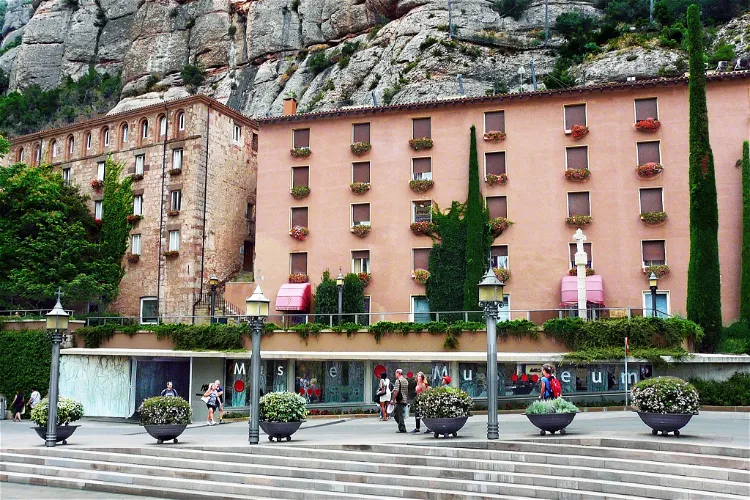
Museum of Montserrat
Monistrol de MontserratThe Museum of Montserrat is located within the Abbey of Montserrat, a thousand-year-old institution. It showcases a selection of the most outstanding artistic and archaeological heritage. This includes a wide range of collections, each unique and different, providing a comprehensive view of various historical periods and cultures.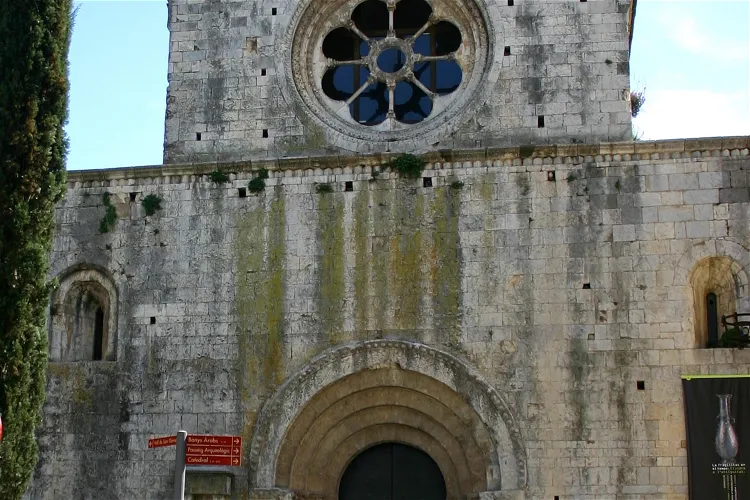
Archaeology Museum of Catalonia
GeronaThe Archaeology Museum of Catalonia in Gerona is housed in the historic monastery of San Pedro de Galligans. Established in 1857, the museum continues to operate from this location, offering visitors a unique blend of history and culture. The museum's setting in a former monastery adds a layer of historical significance to the artifacts on display.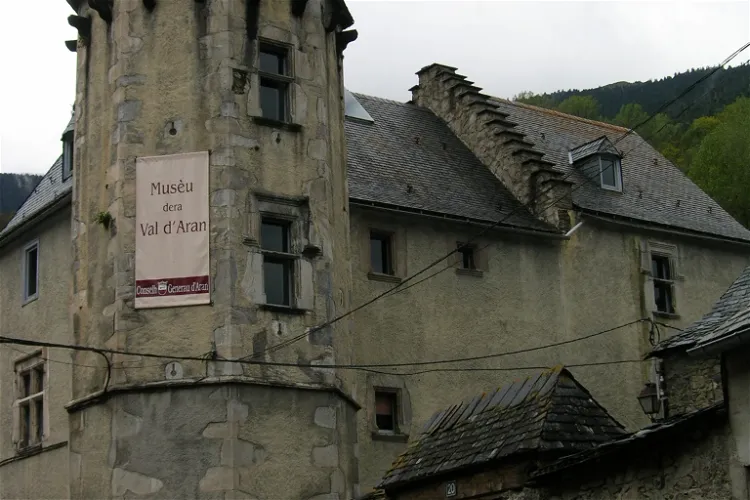
Musèu dera Val d'Aran
Viella Mitg AránThe Museo del Valle de Arán, also known as Musèu dera Val d'Aran, is a regional museum located in Viella. It is dedicated to the history, art, ethnography, and ethnology of the Aran Valley. The museum is housed in a late Gothic-style manor house known as the Torre del general Martinón. It also occupies the Casa Joanchiquet in Vilamós and the church of San Juan de Artiés. The museum's main objective is to preserve the Aranese culture in all its aspects, through the different stages and epochs of the Aran Valley.
Cap de Tossa Lighthouse
Tossa de MarThe Tossa Lighthouse is a significant landmark located in the resort town of Tossa de Mar. This town is situated at the southern end of the Costa Brava, in the Province of Girona, Catalonia, Spain. The lighthouse offers a unique blend of historical and cultural significance, making it a point of interest for tourists visiting the area.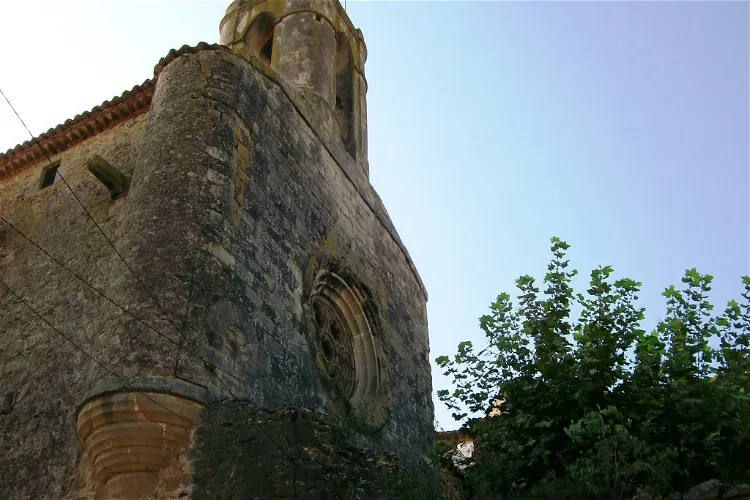
Castle of Púbol
PúbolThe Castle of Púbol, a Gothic-Renaissance fortification from the 11th century, is located in the hamlet of Púbol, which belongs to the municipality of La Pera, in the Baix Empordà. This historical site offers a unique glimpse into the past, with its well-preserved architecture and rich history.
National Archaeological Museum of Tarragona
TarragonaThe National Archaeological Museum of Tarragona, also known as Museu Nacional Arqueològic de Tarragona or MNAT, is a public museum situated in the city of Tarragona in Catalonia, Spain. The museum is home to a variety of elements and remains that reflect the city's rich history and heritage.
Museum of the Mediterranean
Torroella de MontgríThe Museum of the Mediterranean, established in 2003, is situated in the town of Torroella de Montgrí. It is housed in Can Quintana, a historical building dating back to the 16th century. This location adds a touch of historical charm to the museum, making it an interesting destination for tourists who appreciate both history and culture.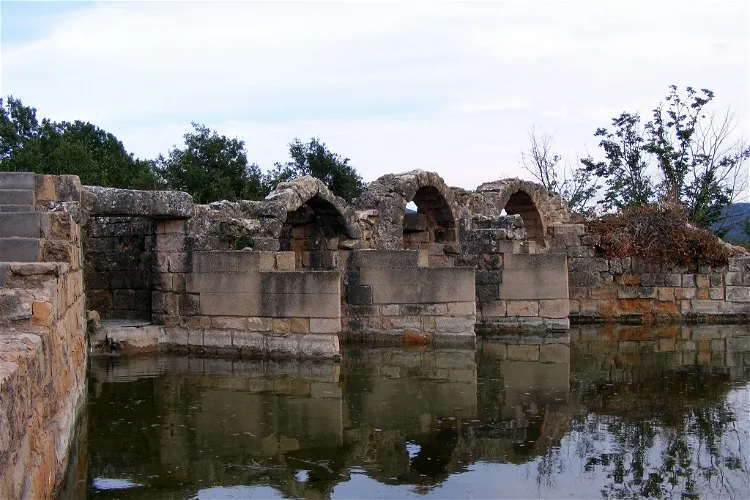
Los Molinos de la Vila
MontblancLos Molinos de la Vila, also known as Els Molins de la Vila in Catalan, are situated one kilometer east of the village of Montblanch, nestled between the Francolí and Anguera rivers. Specifically, they are located on the bank of the Anguera river. This location provides a picturesque setting for visitors to explore and appreciate the historical significance of these mills.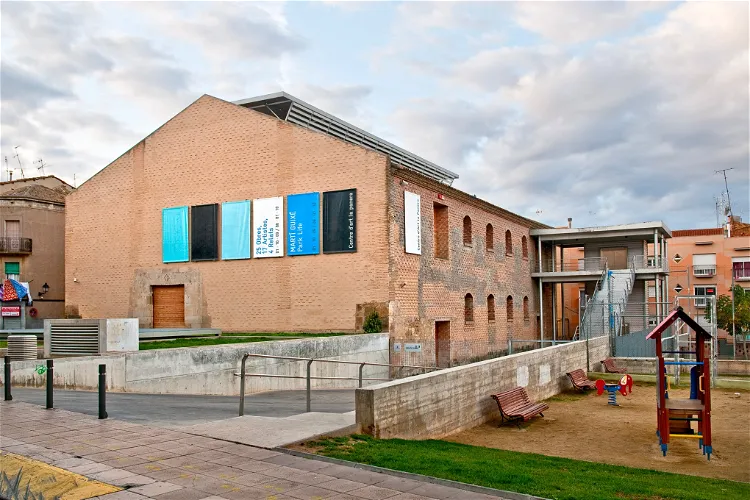
Art Centre of La Panera
LleidaThe Art Centre of La Panera is an art museum situated in the city of Lleida, Catalonia, Spain. It is a significant cultural institution in the region, offering visitors a chance to explore a wide range of contemporary art, particularly from Catalan and Spanish artists.
Toy Museum of Catalonia
FigueresThe Toy Museum of Catalonia is housed in the historic Casa Terradas, a building that dates back to 1767. Located in the city of Figueres, Spain, the museum offers visitors a unique opportunity to explore the rich history of toys in Catalonia. The museum's location adds an extra layer of historical significance, making it a fascinating destination for tourists interested in both history and toys.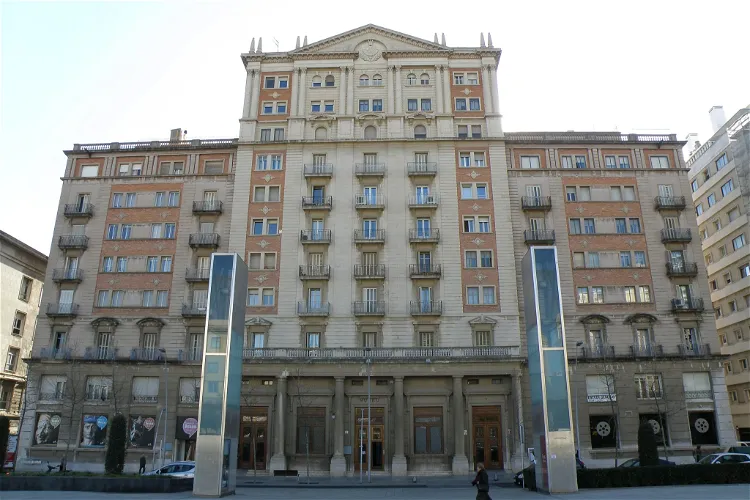
Reus Art and History Museum
ReusThe Reus Art and History Museum is a significant cultural landmark in the municipality of Reus, Tarragona, Spain. It is a protected building, recognized as a Cultural Asset of National Interest. This recognition highlights the museum's importance in preserving and showcasing the rich cultural and historical heritage of the region.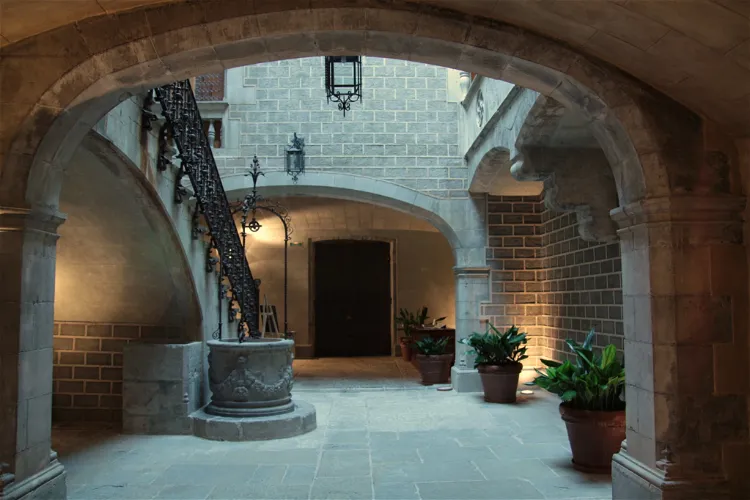
Palau Solterra Museum
Torroella de MontgríThe Palau Solterra is a museum dedicated to contemporary photography, located in the town of Torroella de Montgrí in Catalonia. It is part of the Fundació Vila Casas, which is a foundation dedicated to promoting contemporary Catalan art. The museum is housed in a 15th-century palatial mansion, adding a touch of historical charm to the modern art it displays.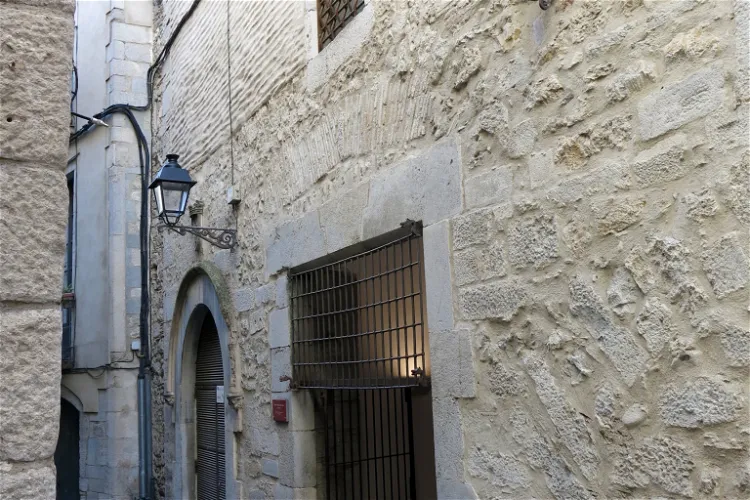
Girona History Museum
GeronaThe Girona City History Museum is situated in the heart of the Old Town of Girona. This unique location was once the convent of the Capuchin friars of Saint Anthony in the 18th century. The building still retains some fascinating remnants from that era, such as the cemetery, cloister, and cistern, adding to the historical charm of the museum.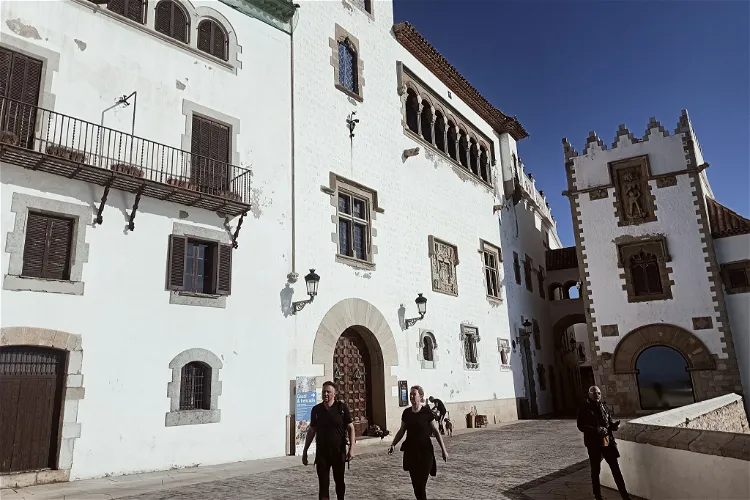
Cau Ferrat Museum
SitgesThe Cau Ferrat Museum, located in the picturesque town of Sitges in Catalonia, is a place of historical and artistic significance. Originally, it served as the home and workshop of the renowned artist and writer Santiago Rusiñol. This unique setting offers visitors a glimpse into the life and work of this influential figure in Catalan modernism.
National Museum of Science and Technology of Catalonia
TerrassaIn addition to its main location, the mNACTEC also operates three other sites: Farga Palau de Ripoll, Museu do Cimento Asland de Castellar de n’Hug, and the Museu da Colonia Sedó Esparreguera. These additional locations offer visitors the opportunity to explore different aspects of Catalonia's industrial and technological history.
Catalan Wine Cultures Museum
Vilafranca del PenedèsThe Catalan Wine Cultures Museum, also known as VINSEUM, is situated in an ancient palace that once belonged to the kings of the Crown of Aragon. This historic building is located in the Jaume I square in Vilafranca del Penedès, a town in Barcelona, Spain. The museum's location adds a touch of historical significance to the overall experience of the visitors.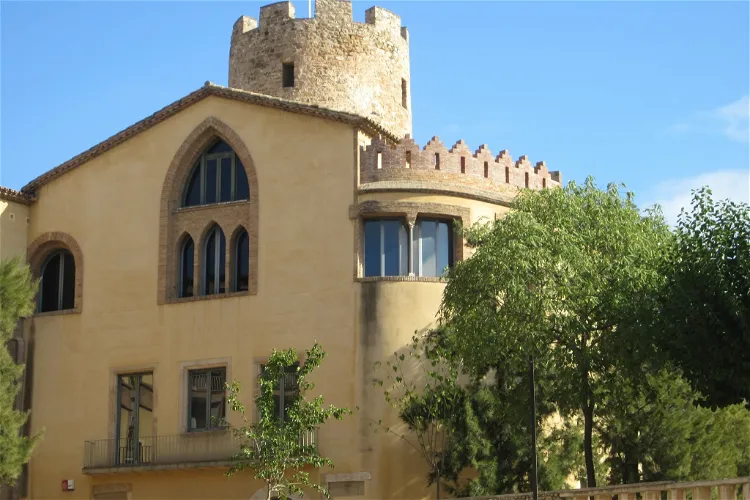
Balldovina Tower Museum
Santa Coloma de GramenetThe Balldovina Tower Museum in Santa Coloma de Gramanet is a multidisciplinary local museum. Its main objective is to protect, conserve, study, and disseminate the cultural and natural heritage of the territory. The museum collaborates with both public and private entities of the city to achieve these goals.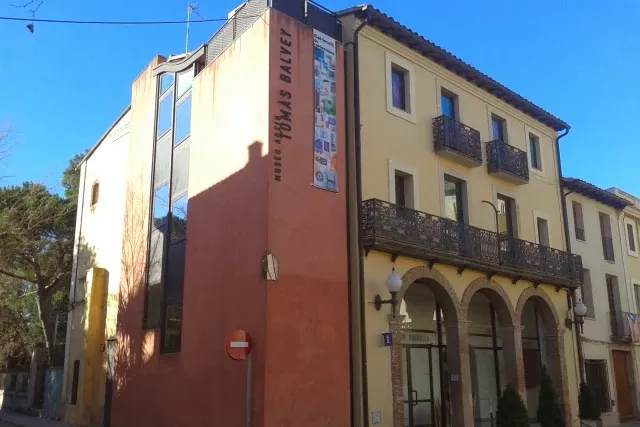
Cardadeu Tomàs Balvey Museum-Archive
CardedeuThe Tomàs Balvey Museum-Archive in Cardedeu is a unique institution that revolves around the legacy of Tomàs Balvey i Bas, who was the last in a long line of pharmacists in Cardedeu. The museum's narrative is built around the pharmacy and its pharmacist, focusing on the world of illness, remedies, and health. This makes it a fascinating destination for those interested in the history of medicine and pharmacy.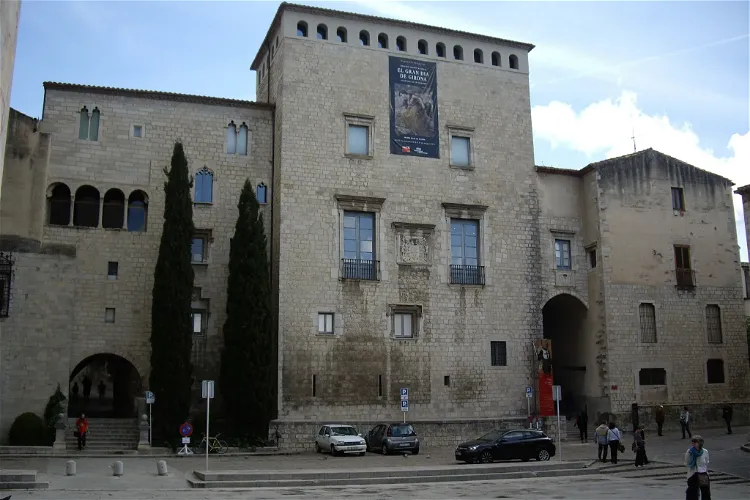
Girona Art Museum
GeronaThe Girona Art Museum, a public institution, was established in 1976. This was achieved by merging the collections of the provincial fine arts museum with those of the Girona Diocesan Museum. This merger resulted in a rich and diverse collection of artworks and artifacts, making the museum a significant cultural institution in the region.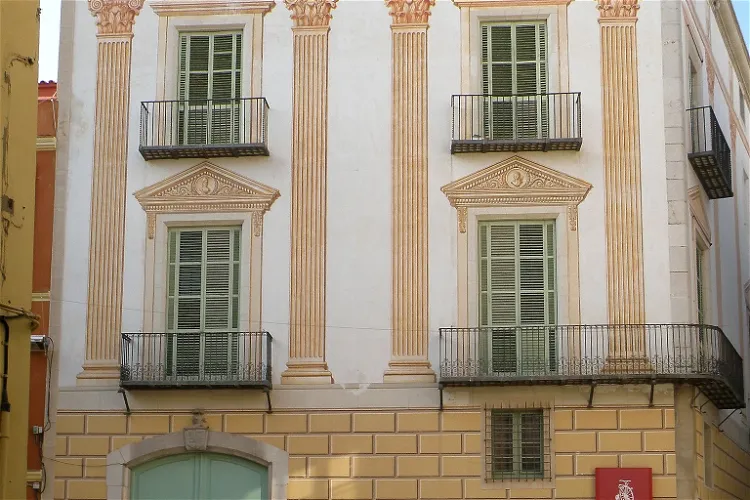
Can Papiol Romanticism Museum
Vilanova y GeltrúThe Can Papiol Romantic Museum is situated in the historic center of Villanueva and Geltrú, a location that adds to its charm. This museum is easily accessible and offers visitors a chance to step back in time and experience the romantic era in a unique and authentic setting.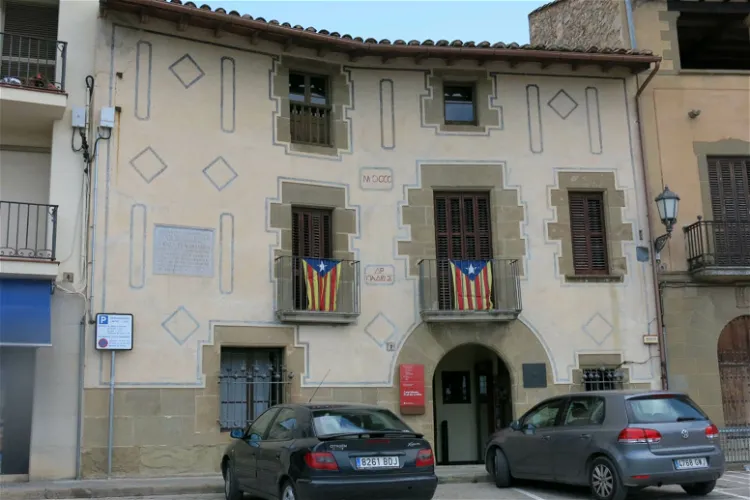
Casa Museu Prat de la Riba
CastellterçolThe Casa-Museo Prat de la Riba is a museum situated in the town of Castelltersol, in the Catalan region of Moyanés, Spain. It is the birthplace and deathplace of the Spanish politician Enric Prat de la Riba, a key theorist of Catalan nationalism, founder of the Lliga Regionalista, and the first president of the Mancomunidad de Cataluña.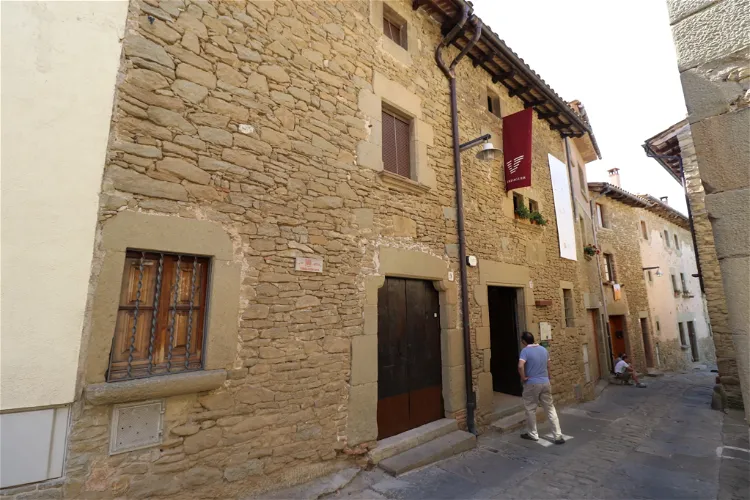
Verdaguer House-Museum
FolguerolesThe Cerdanyola Art Museum, also known as Can Domènech, is an art museum situated in the old town of Sardañola del Vallés in Spain. This museum is a part of the Local Museums Network of the Barcelona Provincial Council and the European Route of Modernism. It was inaugurated on September 10, 2009, and is housed in a building that is a significant example of local modernist architecture.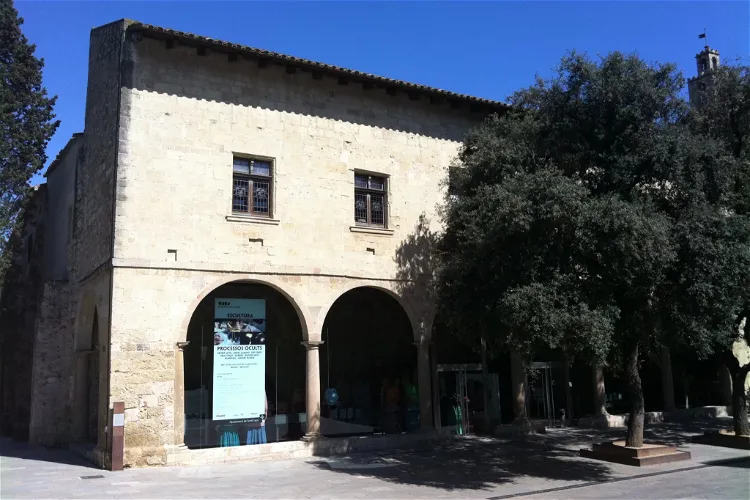
Sant Cugat Museum
Sant Cugat del VallèsThe Sant Cugat Museum, which opened its doors on 23 April 2003, is dedicated to the preservation and promotion of the historical, artistic, and cultural heritage of Sant Cugat del Vallès in Catalonia. As a visitor, you can explore the rich history and culture of the region through the museum's extensive collections and exhibitions.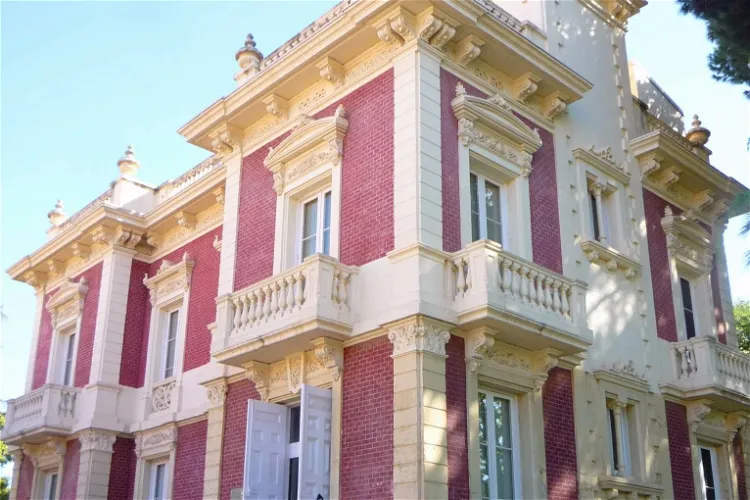
Can Tinturé Museum
Esplugues de LlobregatThe Can Tinturé Museum, situated in Esplugues de Llobregat, is a unique cultural destination as it is Spain's first monographic sample tile museum. The museum is housed in a late 19th-century house, which was designed by the renowned architect Claudi Duran i Ventosa. This historical setting adds to the overall charm and appeal of the museum, making it a noteworthy stop for those interested in architecture and art.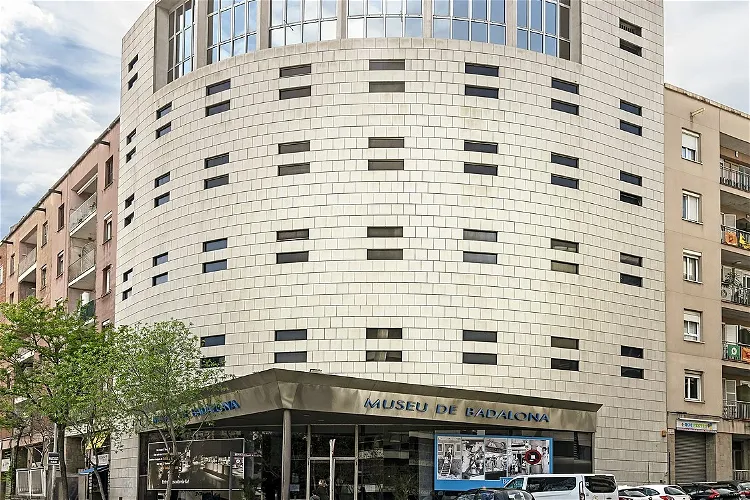
Badalona Museum
BadalonaThe Badalona Museum was founded in 1955, following the discovery of Roman baths by the local archaeologist and historian, Josep M. Cuyàs i Tolosa. This marked the beginning of the museum's journey, which has since become a significant cultural and historical site in the city.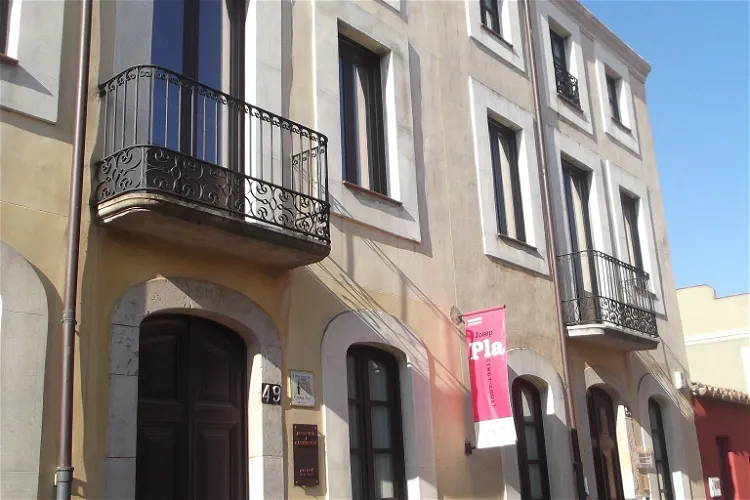
The Josep Pla Foundation
PalafrugellThe Josep Pla Foundation, located in Palafrugell, is a literary heritage center dedicated to promoting the reading and study of the works of Josep Pla. This includes both his literary and journalistic contributions. The foundation aims to facilitate access to Pla's works and encourage a deeper understanding of his contributions to literature.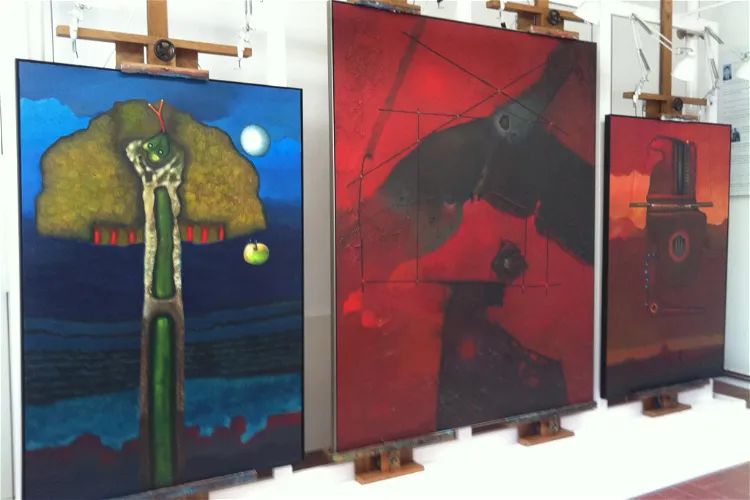
The Cuixart Foundation
PalafrugellThe Cuixart Foundation is in charge of maintaining the modernist house where Modest Cuixart lived from the 70s. This house, along with the painter's workshop, forms part of the cultural heritage of the Foundation. Visitors to the Foundation can explore these preserved spaces, offering a unique insight into the life and work of the artist.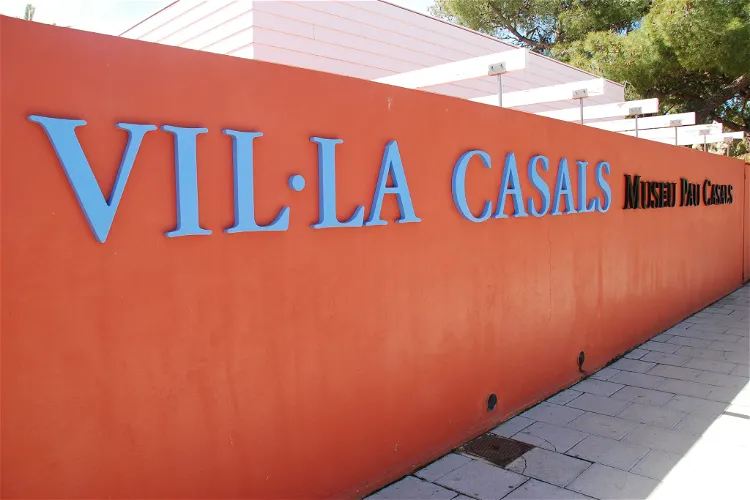
Pau Casals Museum
El VendrellThe Pau Casals Museum, located on the seafront of San Salvador in Vendrell, is dedicated to the life and work of Pau Casals. The museum, which was inaugurated in 1974, aims to conserve, preserve, and disseminate the figure of Pau Casals, his work, and his heritage.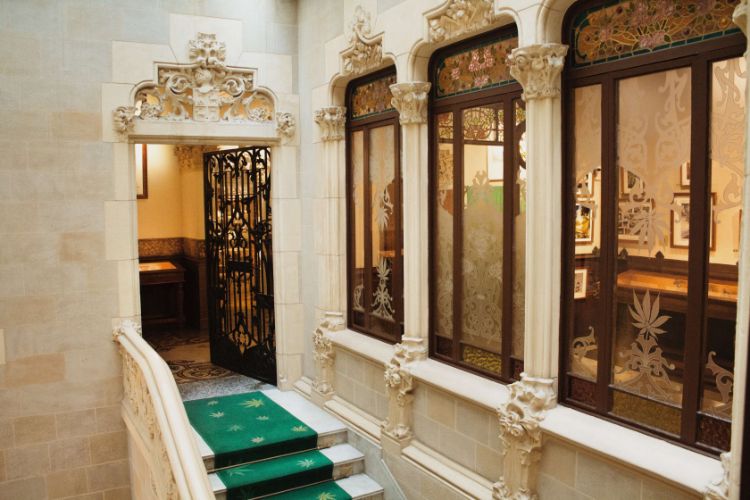
Hash Marihuana & Hemp Museum
BarcelonaThe Hash Marihuana & Hemp Museum manages and exhibits a unique collection of more than 12,000 objects related to all aspects of the cannabis plant. From cultivation to consumption, from ancient ritual to modern medicine, every aspect of cannabis in human culture is represented in some way in our two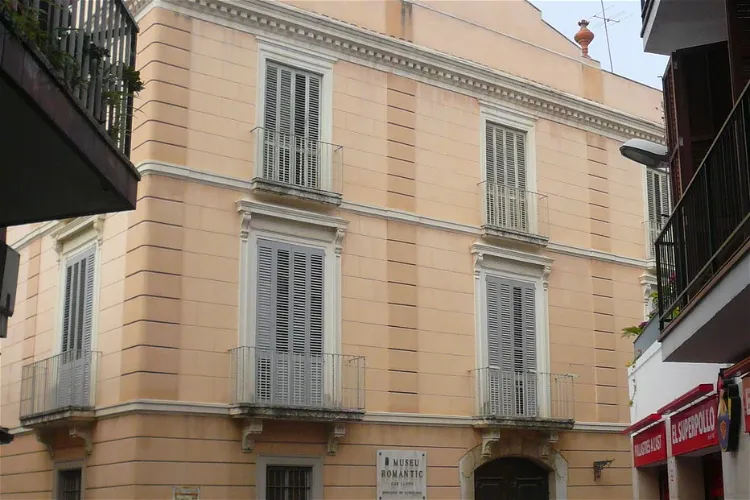
Can Llopis Romanticism Museum
SitgesThe Can Llopis Romanticism Museum, also known as Museu Romàntic Can Llopis, is situated in a Neoclassical-style building in the heart of Sitges. It is a part of the Barcelona Provincial Council Local Museum Network, making it a significant cultural site in the region. The museum is housed in the former Casa Llopis, a stately home built in 1793 that was once one of the most impressive residences in Sitges's new district.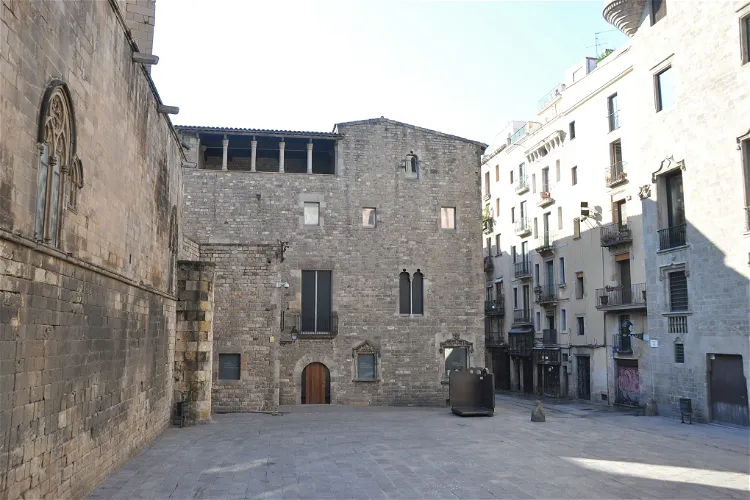
Museum of the History of Barcelona
La MasiaThe Museum of the History of Barcelona, also known as MUHBA, is a city institution that is dedicated to preserving, documenting, maintaining, and exhibiting Barcelona's cultural heritage from its beginnings to the present. The museum's collections include a wide range of artifacts and exhibits that provide a comprehensive overview of the city's history and cultural evolution. Visitors to the museum can expect to gain a deeper understanding of Barcelona's rich and diverse history.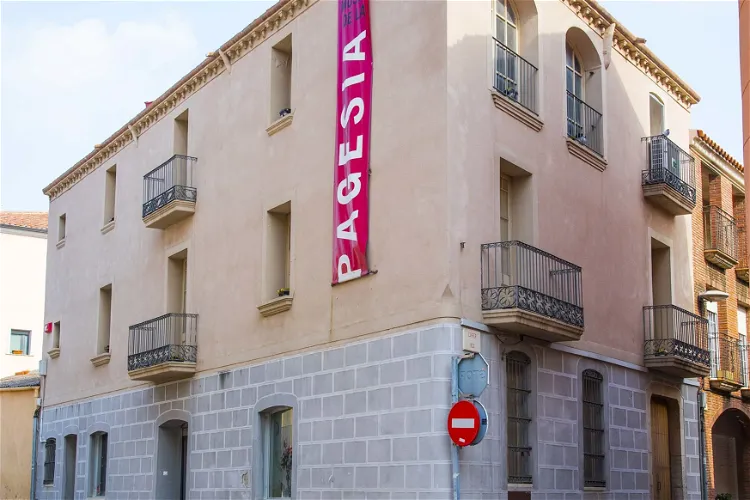
Museu de la Pagesia
CastellbisbalThe Museu de la Pagesia in Castellbisbal, located in the Vallés Occidental region, is dedicated to the preservation and promotion of the local cultural heritage related to the agricultural world. This museum provides a unique opportunity for visitors to delve into the rich agricultural history of the region and understand its impact on the local culture.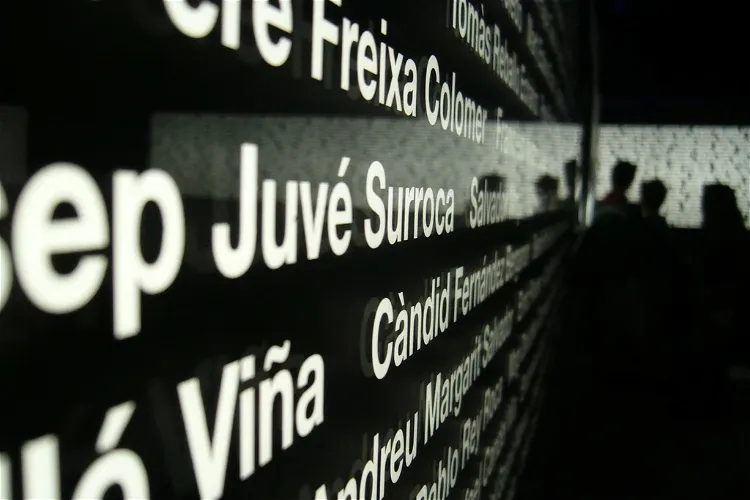
Museu memorial de l'exili
La JunqueraThe Museu Memorial de l'Exili, also known as MUME, is a modern documentation center that focuses on the Retirada of 1939 and the exile of Spanish Republicans. This museum provides an in-depth look into a significant period of Spanish history, offering visitors a chance to learn about the events and experiences of those who lived through this time.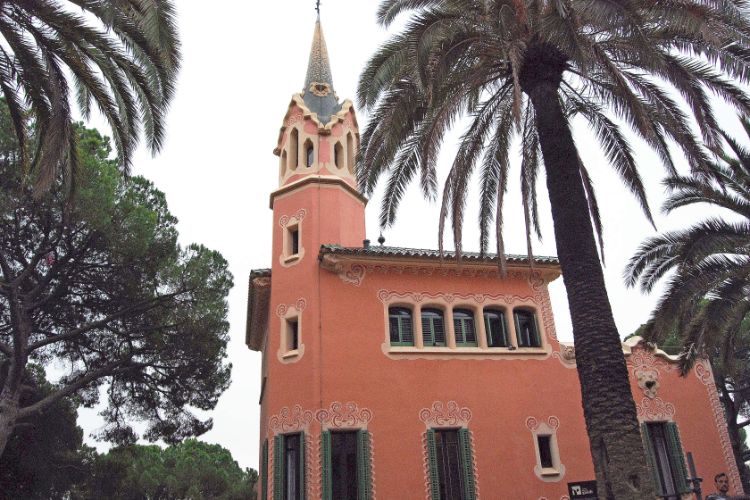
Gaudi House Museum
BarcelonaThe former residence of the architect Antoni Gaudí now serves as a museum. The museum is devoted to his work and is an eyecatcher for the Park Güell. It was designed by his friend Francesc d’Assís Berenguer i Mestres. Antoni Gaudí i Cornet lived in this house from 1906 to 1925. Some rooms are still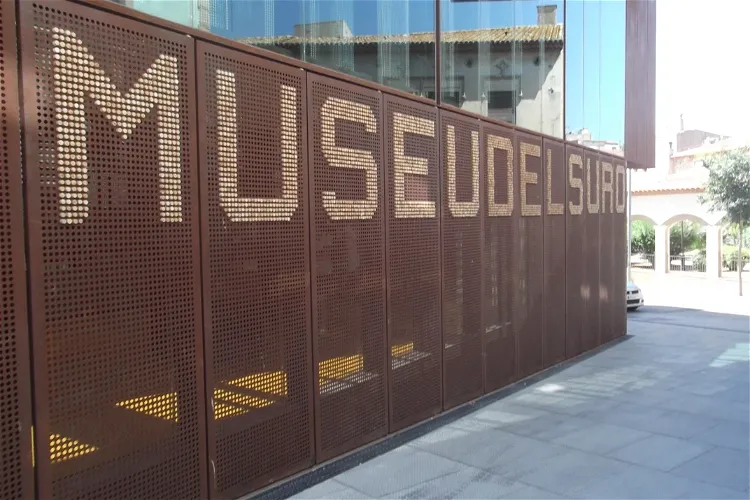
The Cork Museum
PalafrugellThe Cork Museum of Palafrugell, located in Spain, is a unique institution dedicated to the cork industry in Catalonia. It provides an in-depth look into the history and processes of this industry, offering visitors a chance to learn about the production of cork and its various uses. The museum is situated in a modernist factory, surrounded by a small cork forest, adding to the authenticity of the experience.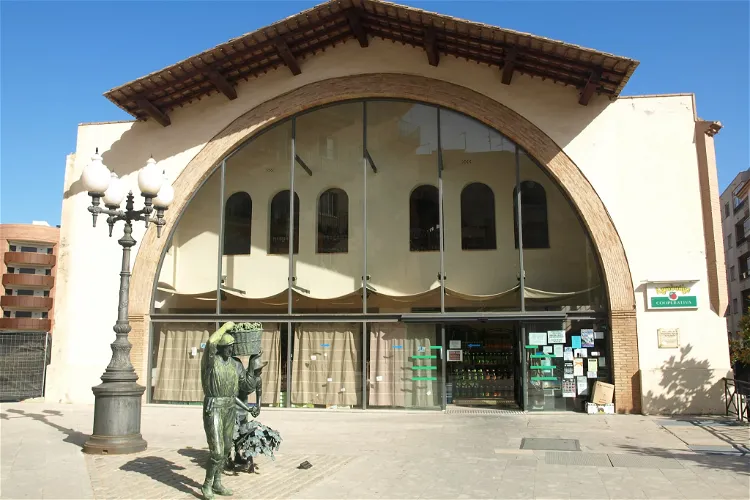
Cambrils Agricultural Museum
CambrilsThe Cambrils Agricultural Museum, previously known as the Agricultural Union Winery, is a significant site in the Spanish city of Cambrils. It is recognized in the Inventory of Architectural Heritage of Catalonia, which adds to its historical and cultural value. The museum is housed in a building that was once a cooperative winery, and it showcases the process of wine and olive oil production in its original context.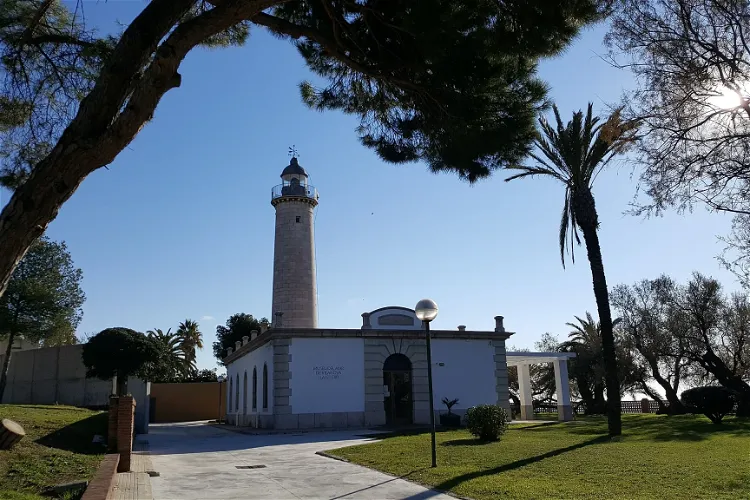
Espai Far
Vilanova y GeltrúEspai Far is a museum situated in the San Cristóbal Lighthouse of Villanueva and Geltrú. The museum is dedicated to the local maritime tradition, offering visitors a unique insight into the region's rich seafaring history and culture.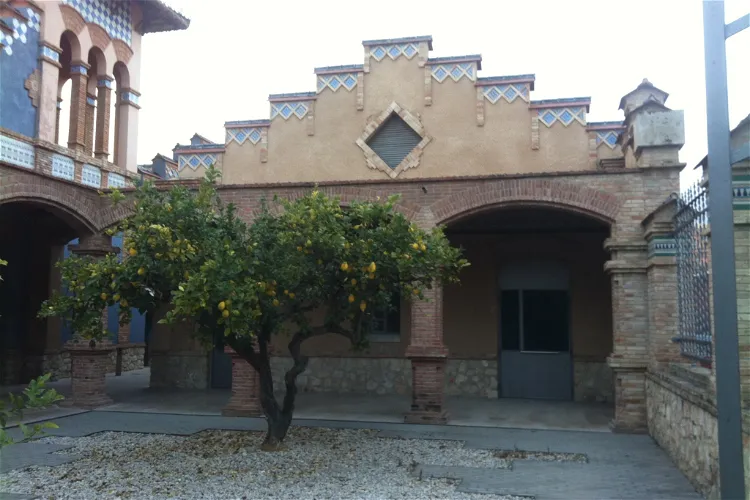
Tortosa Museum
TortosaThe Tortosa Museum, a cultural facility, was inaugurated in 2012. It is the successor of the old museum that was established in 1900 based on the discoveries of the architect Joan Abril i Guanyabens. This historical connection adds a layer of depth to the museum's significance, making it a place where visitors can appreciate not only the exhibits but also the rich history of the institution itself.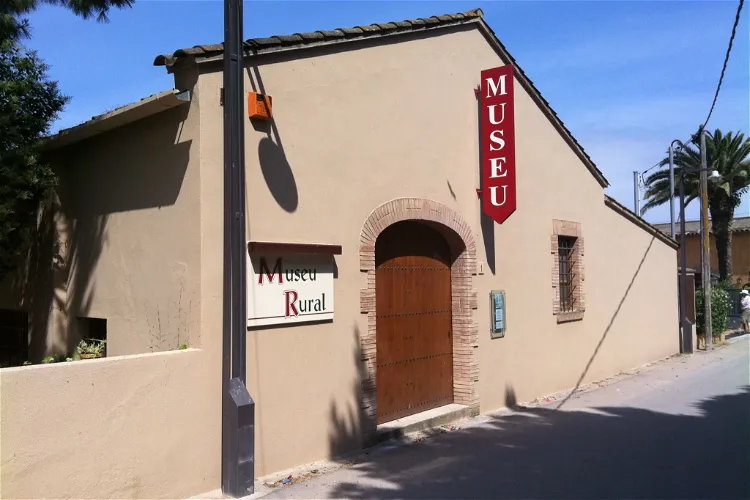
Rural Museum
Palau-satorPalau-sator is a quaint town located in the province of Girona, within the Autonomous Region of Catalonia. This municipality is not just a single town, but also encompasses the charming villages of Fontclara, Sant Feliu de Boada, Sant Julià de Boada, and Pantaleu. Each of these villages has its own unique character and history, making them interesting places to explore for tourists.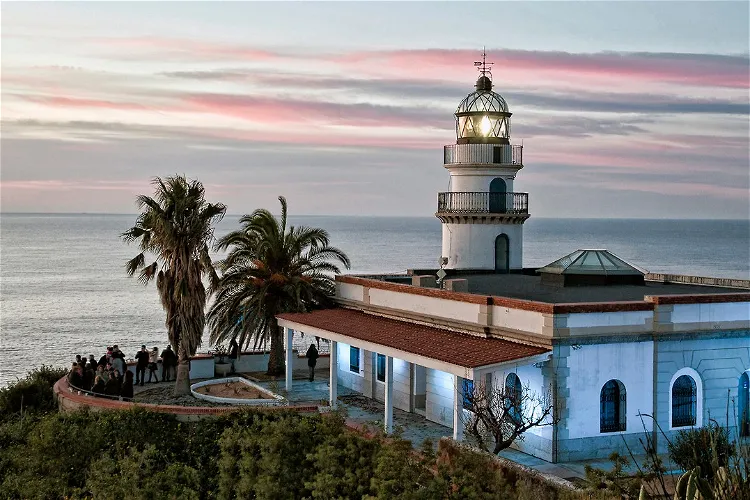
LightHouse of Calella
CalellaThe Calella Lighthouse is a significant landmark situated in the city of Calella, which is approximately 58 km northeast of Barcelona, in the province of Barcelona, Catalonia, Spain. This location makes it easily accessible for tourists visiting Barcelona and looking for day trips to explore the surrounding areas.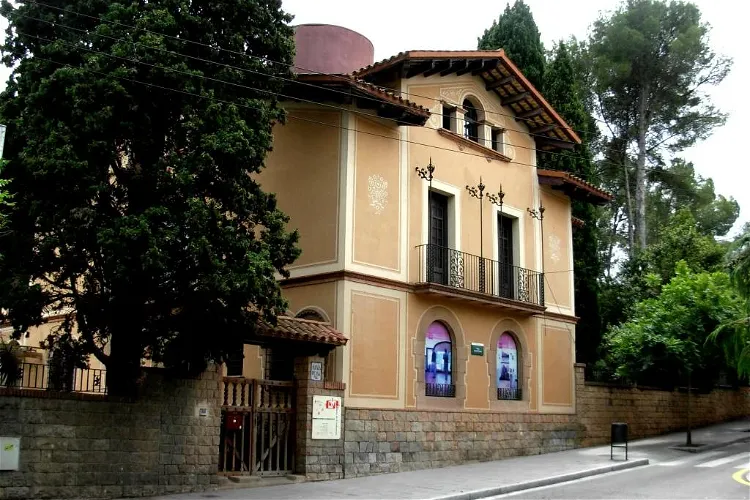
Cerdanyola Museum
Cerdanyola del VallésThe Cerdanyola Museum, situated in the Vallés Occidental region of Catalonia, is not confined to a single building. Instead, it comprises a collection of spaces scattered throughout the town. This unique approach allows visitors to explore the town and its history in a more immersive way, as the museum is essentially the territory itself.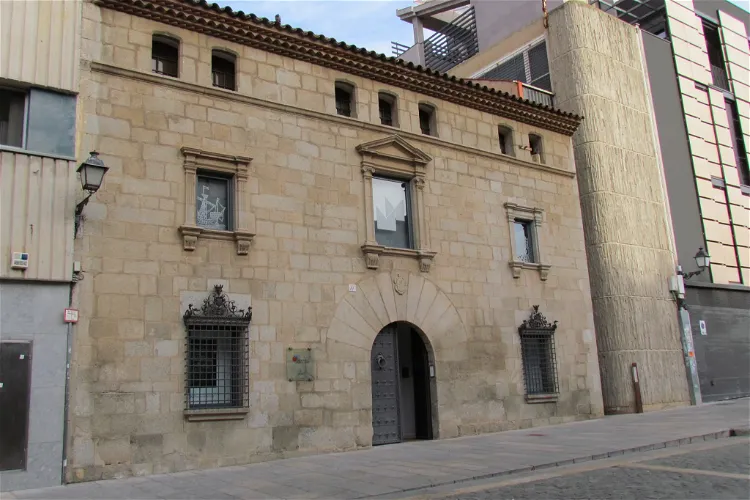
Mataró Museum
MataróThe Mataró Museum is a Spanish museum institution located in Mataró, a city in the Maresme region of Barcelona. The museum's headquarters are in Can Serra, a building constructed in 1565 that showcases the Renaissance architectural style. This historical building adds a unique charm to the museum, making it a fascinating place for tourists interested in history and architecture.
MUHBA Oliva Artés
BarcelonaThe Oliva Artés Hall is part of the MUHBA Museum of History of Barcelona. Located in a former factory where engines were produced in the heart of Poblenou’s industrial district, the exhibition illustrates the city’s urban and social growth over the years.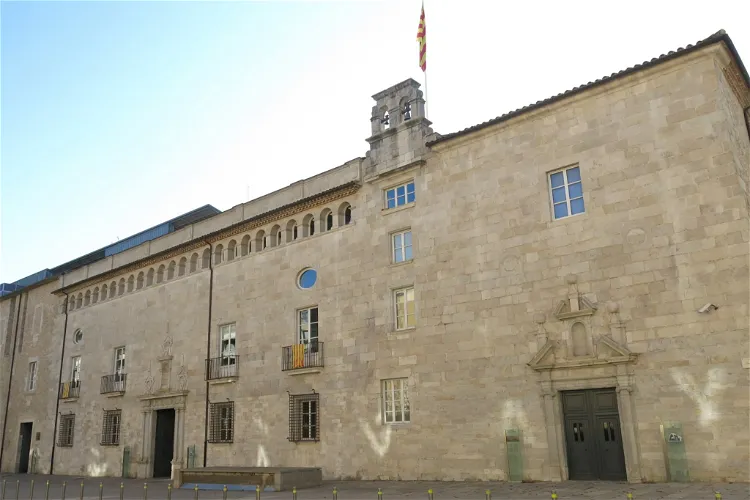
Antic Hospital de Santa Caterina
GeronaThe Antic Hospital de Santa Caterina is a significant historical site in Gerona, Spain. Constructed in the 17th century, it was originally built to cater to the city's population's needs. Since 2010, it has been serving as the headquarters of the Generalitat de Catalunya in the region. The hospital's functions were transferred to a new building in the neighboring town of Salt in 2009.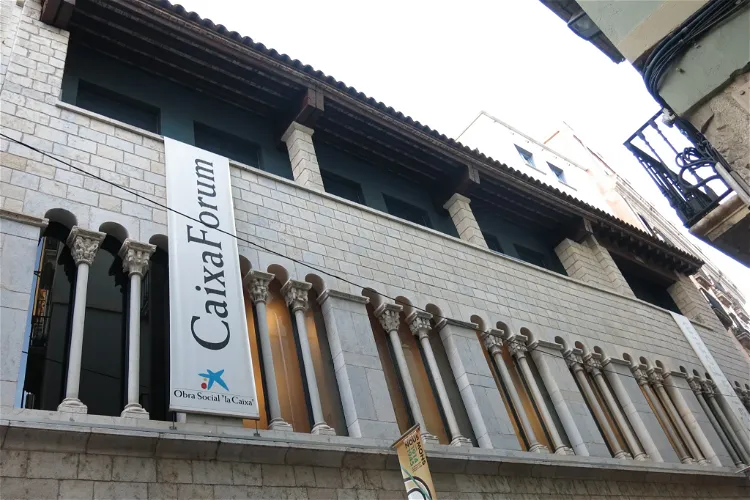
CaixaForum Girona
GeronaCaixaForum Girona is a hub for a wide array of exhibitions and cultural and educational activities, catering to a diverse audience. The forum is part of a network of CaixaForum centers spread across various locations in Spain, including Madrid, Barcelona, Seville, Zaragoza, Palma, Lérida, Tarragona, València, and Macaya.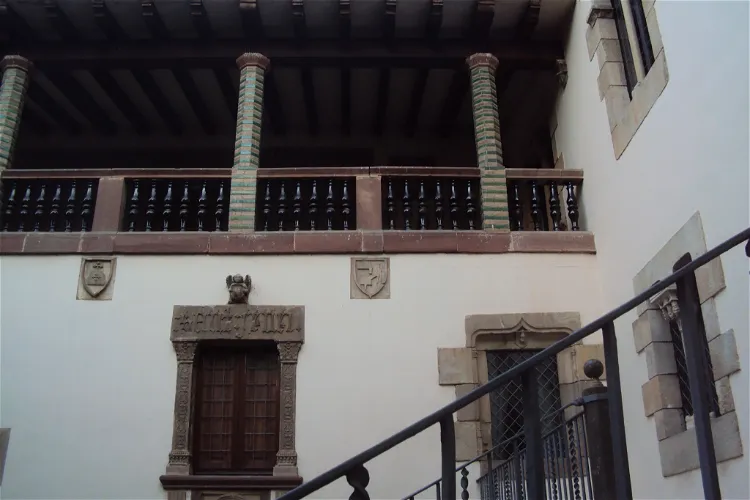
L'Enrajolada Santacana House-Museum
MartorellL'Enrajolada-Casa Museo Santacana, situated in Martorell, a province of Barcelona, is recognized as one of the oldest museums in Catalonia, Spain. The museum was established in 1876 by Francesc Santacana i Campmany and was later continued by his grandson, Francesc Santacana i Romeu. This historical establishment offers a glimpse into the rich cultural heritage of the region.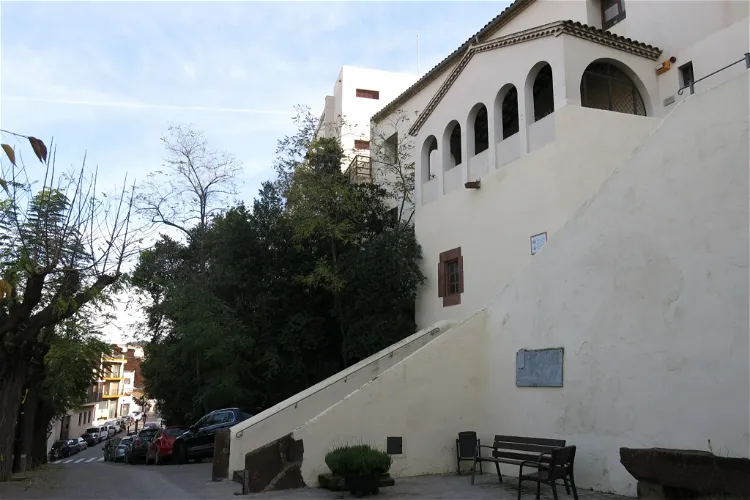
Vicenç Ros Municipal Museum
MartorellThe Vicenç Ros Municipal Museum, located in Martorell, is housed in part of the old Capuchin convent, a structure dating back to the 17th century. This historical setting adds a unique charm to the museum, making it a fascinating place to explore for those interested in history and architecture.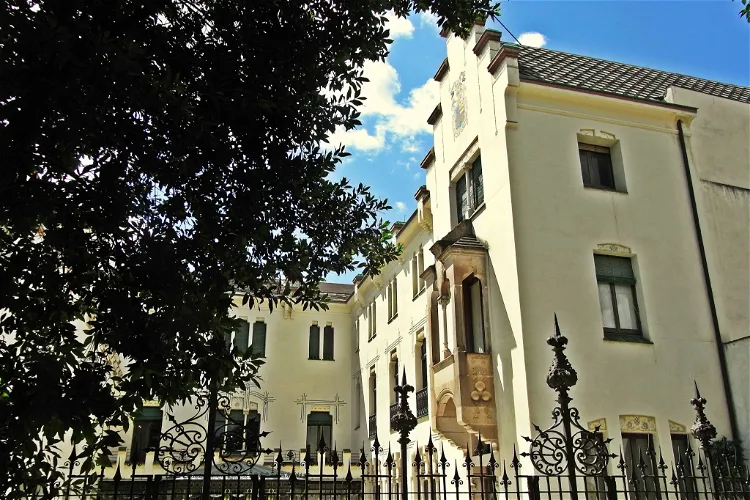
Casa Alegre De Sagrera
TerrassaLa Casa Alegre de Sagrera is a museum building located at Font Vella Street, number 29, in Terrassa, province of Barcelona. Originally, it was the manor house of Joaquim de Sagrera, a textile manufacturer from the late 18th and early 19th centuries, who played a significant role in the Spanish War of Independence. Despite dating from the beginning of the last century, its current appearance is the result of a modernist reform carried out by Melcior Viñals, a municipal architect, at the beginning of the 20th century.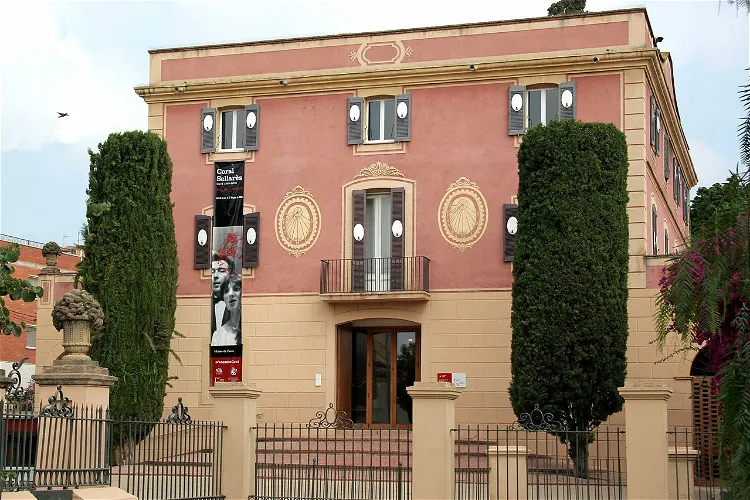
Gavà Museum
GavàThe Gavà Museum and the Gavà Mines Archaeological Park, established in 1978, are two distinct facilities that together form a unique cultural and historical experience. The museum is housed in the Lluc tower, a summer house built in 1799 by a bourgeois family. The park allows visitors to explore the prehistoric mines of Gavà, the oldest gallery mines in Europe.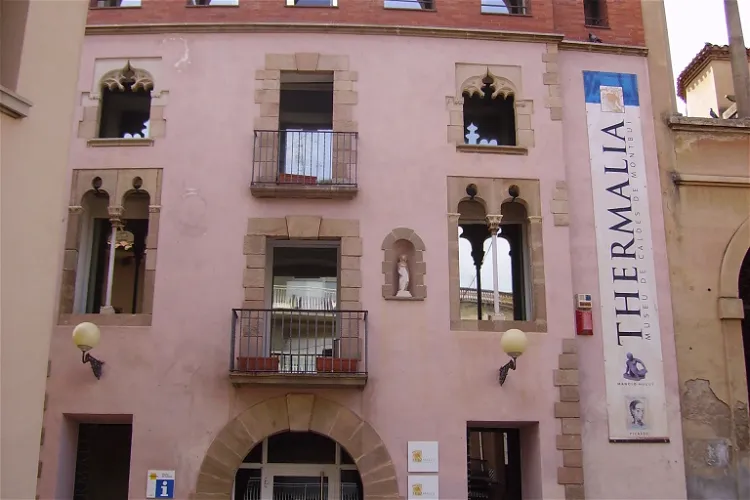
Thermalia Museum
Caldes de MontbuiThermalia is a thematic center that focuses on the culture of thermal water. It is situated in Caldas de Montbuy, a town in the Vallés Oriental region of Catalonia. This unique museum provides an in-depth look into the history and significance of thermal water in the region.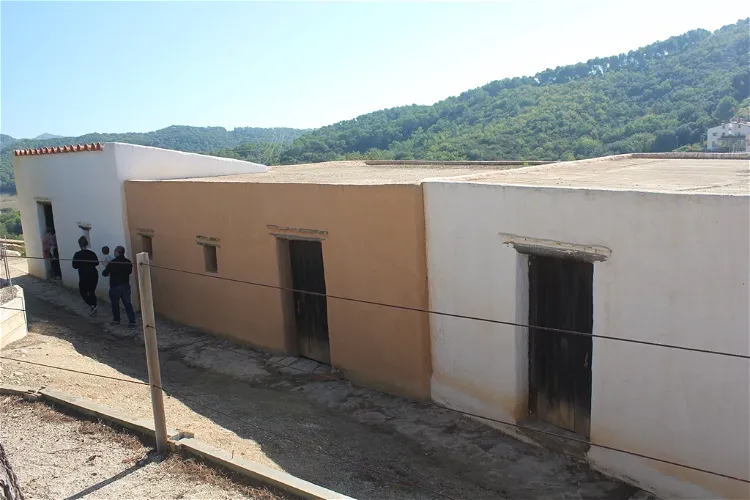
Ca n'Oliver Iberian Settlement and Museum
Cerdanyola del VallésThe Iberian settlement of Can Oliver, declared a Cultural Heritage of National Interest in 2017, is a significant archaeological site located in the Collserola mountain range. It is situated in the territory formerly known as Layetania, which is now part of the municipality of Sardañola del Vallés, specifically in the Montflorit neighborhood. This strategic location offers a panoramic view of the Vallés plain.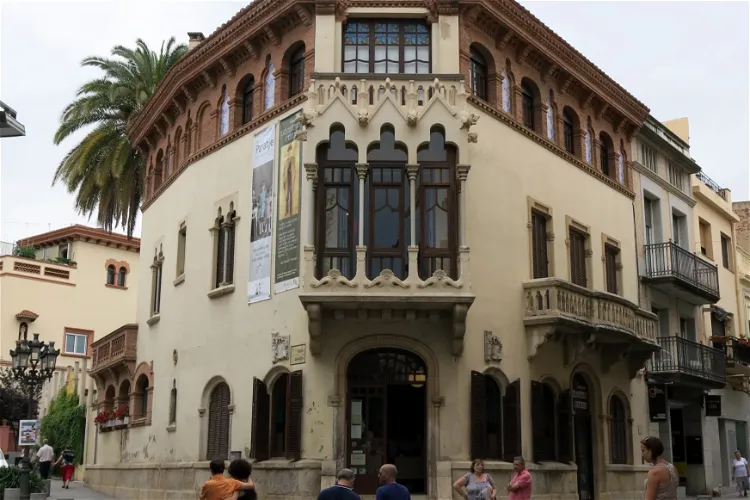
Lluís Domènech i Montaner House-Museum
Canet de MarThe Lluís Domènech i Montaner House-Museum, located in Canet de Mar, Barcelona, is a space dedicated to the study of the life and work of the renowned architect Lluís Domènech i Montaner. The museum comprises the Domènech house, designed by the architect himself, and the 16th-century farmhouse of Can Rocosa, which was converted into his workshop-studio.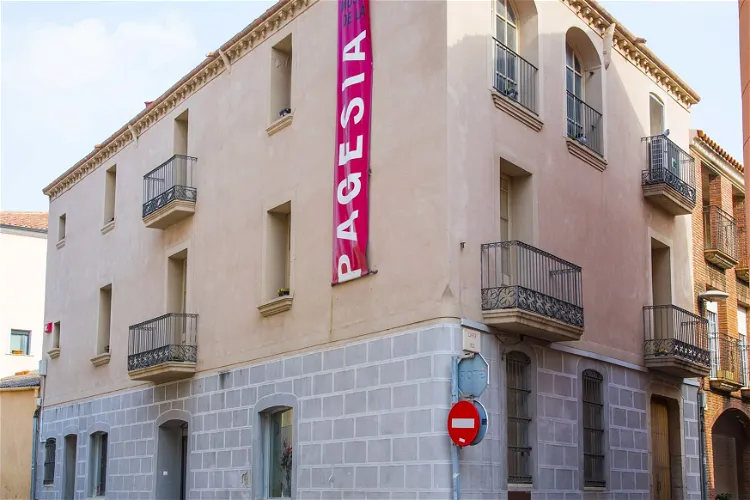
Farming Museum
Fogars de la SelvaThe Museo de la Payesía, located in Castellbisbal, is dedicated to the preservation and dissemination of the local cultural heritage associated with the agricultural world. This museum provides a panoramic view of the agricultural tradition of the population, field work, and the social structure of the rural world.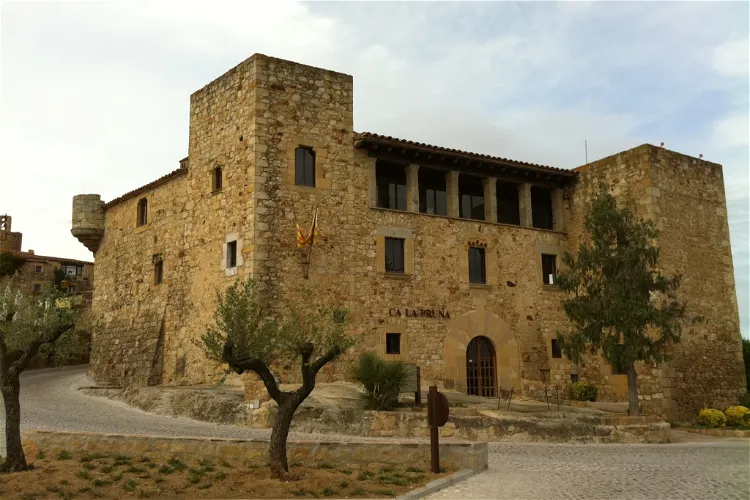
Ca la Pruna - Culture Museum
PalsCa la Pruna is a significant historical site in Pals, dating back to the 16th century. This fortified building is situated at the beginning of the old town, making it a central point of interest for visitors. Its location and historical significance provide a unique insight into the architectural and cultural heritage of the region.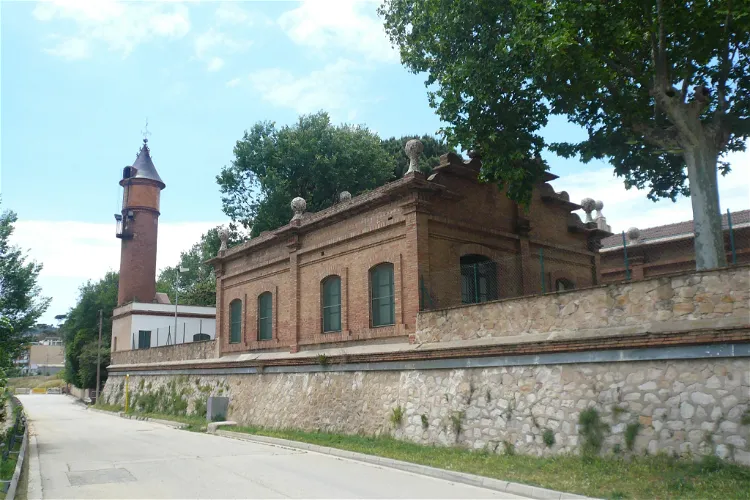
Casa de les Aigües
Montcada i ReixacThe Casa de les Aigües, also known as the wells of Moncada, is a historical site that once served as an extraction and pumping station for groundwater from the Besòs aquifer. This station played a crucial role in supplying drinking water to the city of Barcelona. It is located in the park of the Aguas de Moncada and Reixach (Vallés Occidental).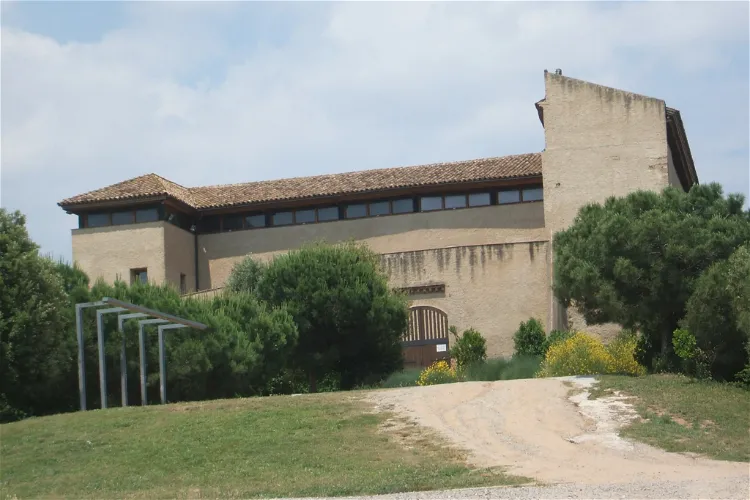
Rubí Municipal Museum
RubíThe Rubí Municipal Museum, also known as El Castillo-Ecomuseo Urbano de Rubí, is situated in the Rubí Castle. This castle is one of the most significant heritage sites in the city, having served various functions from the 13th to the 20th century, including a defensive stronghold, a noble residence, and a farmhouse.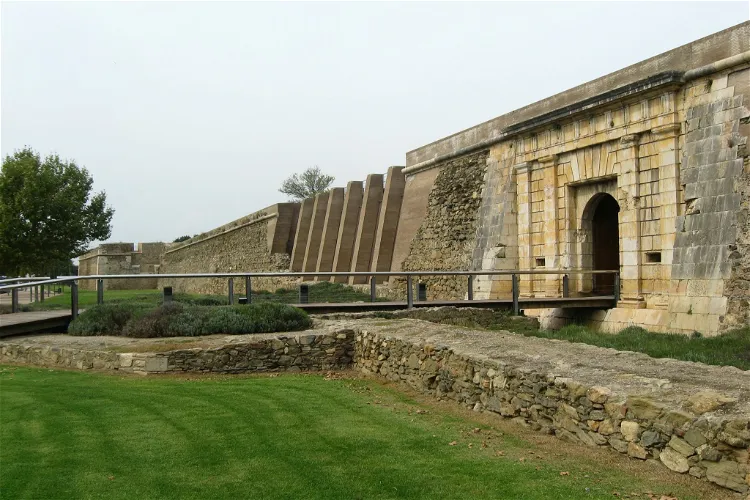
Ciutadella de Roses
RosesCiutadella de Roses, located in Roses, Catalonia, Spain, is a historical site featuring a ruined fortification. The site is surrounded by various other significant buildings, including the Castell de la Trinitat and the monastery Santa Maria de Roses. These structures offer a glimpse into the region's rich history and architectural styles.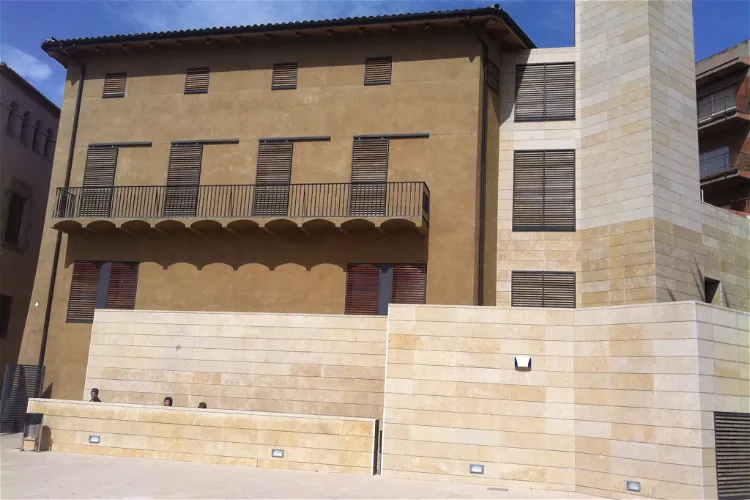
Sant Boi de Llobregat Museum
Sant Boi de LlobregatThe Sant Boi de Llobregat Museum is dedicated to the recovery, preservation, study, and invigoration of the cultural heritage and historical memory of Sant Boi de Llobregat. This mission is reflected in its diverse collections and exhibitions, which provide a comprehensive overview of the region's history and culture.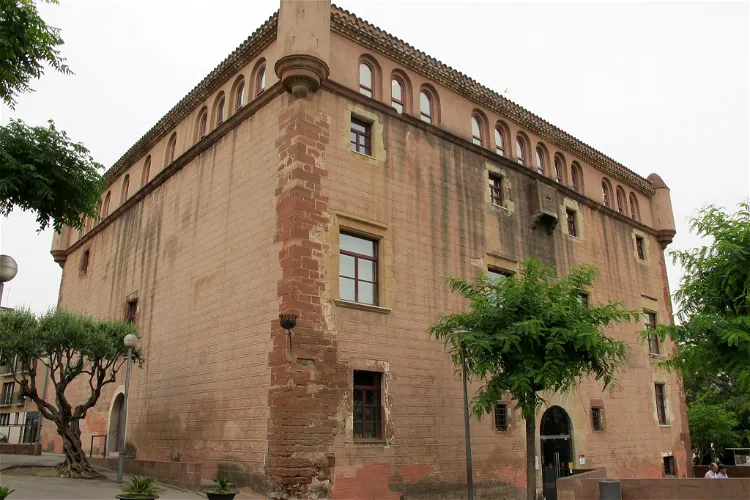
Castell de Pallejà
PallejàEl castillo de Pallejá is a palace-castle situated in the town of Pallejá, in the Catalan region of Bajo Llobregat. This historical site offers a glimpse into the past, with its architecture dating back to the 16th and 17th centuries. It is located at Avenida Prat de la Riba number 10 and is well-preserved and in good condition.
MUHBA Domus Avinyó
BarcelonaMUHBA Domus Avinyó is a domus that dates from the 1st and 4th Centuries A.D. with an ensemble of wall and ceiling paintings.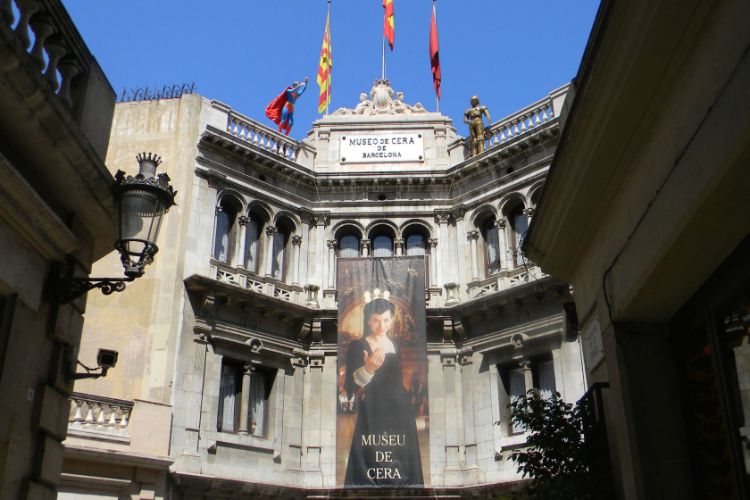
Barcelona Wax Museum
BarcelonaThe Barcelona Wax Museum is housed in a former bank, with neoclassic architecture. The museum houses a collection of wax figures mostly related to history and tries to emphasize the heritage value of the palace and preserves some of the rooms and original furniture of the building.- 69
The Toy Museum
Sant Feliu de GuíxolsThe Toy History Museum, situated in the municipality of Sant Feliu de Guíxols, boasts a collection of over 6,500 pieces. These pieces, mostly of Spanish manufacture, are from the collection of Tomàs Pla and date between the years 1870 and 1980. This extensive collection provides a unique insight into the history of toys and their evolution over a century. - 70
Ecomuseum of the Ebro Delta Natural Park
Sant Jaume d'EnvejaThe Ecomuseum of Somiedo is situated in the Asturian localities of Caunedo and Veigas, both within the council of Somiedo. This location in the heart of Asturias offers visitors the opportunity to explore the beautiful natural surroundings in addition to the museum itself. The museum's location also provides a context for the exhibits, as they reflect the traditions and culture of the local area. - 71
MUHBA Vil·la Joana
BarcelonaVil·la Joana is a masia (a type of rural construction common to all the old Crown of Aragon). The two storey building with a watchtower and lateral galleries is located in Vallvidrera in the middle of Collserola Natural Park. Vil·la Joana houses one of the branches of the Barcelona City History Muse - 72
Museu Palmero
BarcelonaMuseu Palmero lets you discover the former 15th century farmhouse, and lets you enjoy a pictorial background, works by the Palermo series of painters, who still live in the building. The collection of Museu Palmero also comprises of paintings by Maestro Palmero that depict characters who appear thro - 73
MUHBA El Call
BarcelonaMUHBA El Call lets you discover how Barcelona's Jewish community lived in medieval times. The museum is located in the former house of the veil weaver Joseph Bonhiac and covers the role played by the Jews in Barcelona’s history and the splendour of their cultural legacy. - Online discount!74
MUHBA Domus de Sant Honorat
BarcelonaMUHBA Domus de Sant Honora is a Roman domus (a single-family house) that was built in the 4th century A.D. Part of the central garden has been conserved with several tanks containing water and plants. From here visitors can access the different rooms, many of which are decorated with polychrome mosa